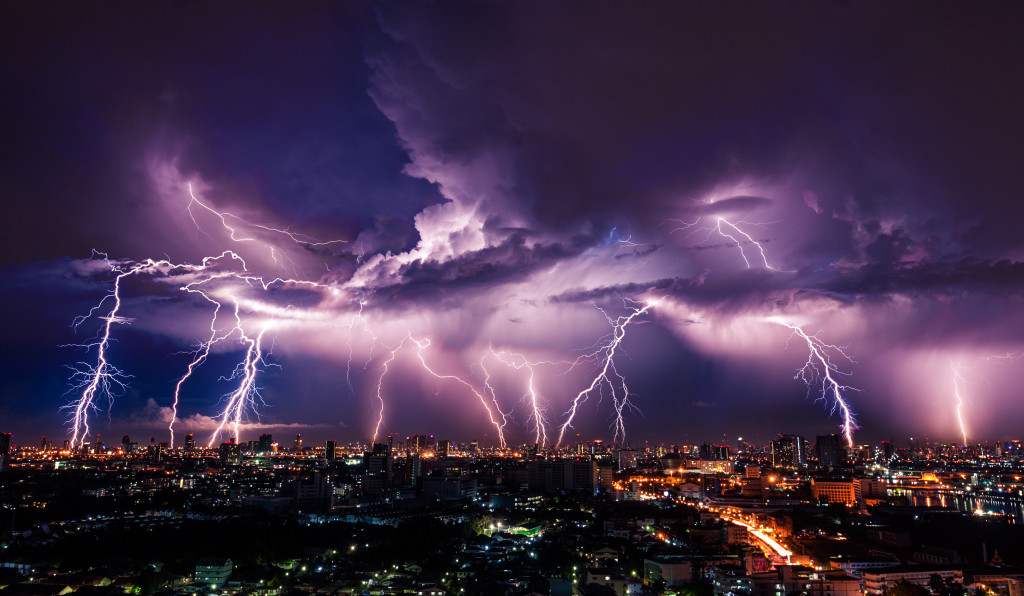- The U.S. encounters approximately 14 named storms annually, causing significant property damage and financial losses.
- Common storm damage includes roof and window destruction, flooding, electrical system hazards, and tree-related incidents.
- Regular inspection and maintenance can help mitigate the risk of extensive damage to roofs and windows.
- Storm shutters, roof reinforcement, and wall fortification are effective renovation options for storm resilience.
- Understanding storm patterns and effects, and adopting preventative measures, can safeguard homes and possessions.
When you think of storms, the first things that come to mind are the wind, rain, and thunder. While they can be beautiful to watch, these natural occurrences can also harm your home. Storms can cause significant damage to your property, destruction that could cause you a lot of money to repair. Here’s what you need to know about storms in the U.S., how they can affect your home, and renovation options for a more resilient home.
Storms in The U.S.
It’s estimated that the country experiences 14 named storms per year on average. The number of storms that reach land can vary depending on the season, but typically Hurricanes will make landfall in the coastal states from June to November. Tornadoes, another common storm in the U.S., usually occur during spring and summer months in the southern states, while hail storms are more likely to appear in late May through August across the country.
Impact on the Home
Storms can cause serious damage to a home. Here are some of those impacts:

1. Damage to Your Roof
Storms can do a lot of damage to your roof. The wind can cause individual shingles or complete roof sections to come off. If the top is already old or has some weakened areas, it makes it easier for the wind to do more damage.
Flying debris, such as tree branches, can damage the roof and cause it to leak. Water damage is also typical if the top is not fixed in time. It is advisable to inspect your roof regularly to avoid extensive damage during the storm. Additionally, consider upgrading to a more resilient metal roofing. Metal roofs are not only more reliable, but they also require less maintenance. It’s cheaper in the long run and better against storms.
2. Destruction to Your Windows
Windows are more vulnerable to storm damage than many of us think. High winds can break windows, especially if they are old or installed poorly. Flying debris, such as rocks, could also hit the window panes and cause them to break. Broken windows endanger the safety of your home and the belongings inside. Replacing the glass with impact-resistant windows is best to prevent storm damage.

3. Flooding
Storms often come with heavy rainfall that can cause flooding, damaging the structure of your house and the belongings inside. Floods have cost the country over $3 billion annually. Overflowing rivers and streams can cause massive floods that damage your house’s foundation. To prevent flood damage to your house, consider building a dam or moving to a higher place before the storm hits. Also, check your gutters and downspouts to ensure they don’t clog before the storm.
4. Electrical System Damage
Lightning is a significant danger that comes with the storm and is another common cause of home damage. A lightning bolt can cause a power surge that damages electrical appliances in your home. When thunderstorms are in the forecast, it is advisable to unplug your appliances to prevent power surges that can damage your devices.
5. Damage to Your Trees
Tree damage is another common occurrence during storms. Trees can fall, or their branches can break due to strong winds. Once a tree falls, it can cause significant damage to your house, especially if it lands on your roof or car. To prevent tree damage, cutting down any trees near your home that show signs of decay or weakness is best.
Renovation Options For a More Resilient Home
You need to make your home more resilient. Here are three effective renovation options for a more resilient home:
Storm Shutters
Installing storm shutters is one of the best ways to protect your windows and doors from storm damage. Storm shutters are durable panels in many styles and can be easily installed over existing windows. They offer protection from wind, debris, and other storm-related hazards.
Reinforce Your Roof
The roof takes the brunt of a storm’s impact. To make your roof more resilient, start by ensuring it is in good shape and meets the latest building codes. You can also strengthen it by adding hurricane straps or trusses.
Reinforce Your Walls
Most storm damage happens to walls due to high winds. To reinforce your walls, install wood-sheathing panels over the entire exterior, and use anchor bolts to secure the home’s frame to the foundation. This will keep your walls secure in case of a storm.
As you can see, storms can cause severe damage to your home and belongings. Understanding storms in the U.S., learning about their impacts, and renovating accordingly can make your home more resilient to those high winds. Don’t wait until it’s too late – start preparing for the storm season today.

